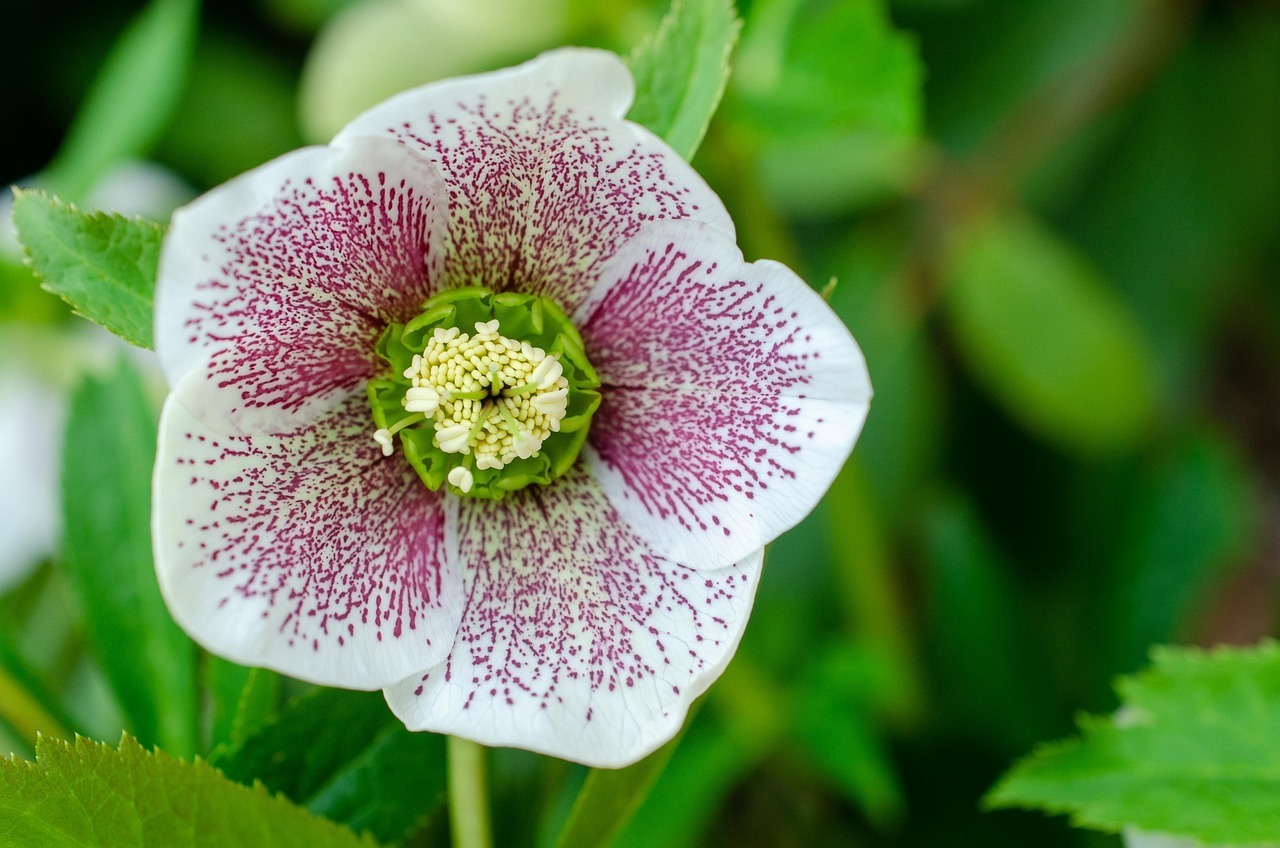
Hellebores, often called Christmas roses or Lenten roses, are fascinating plants that bring a touch of magic to winter gardens. These perennial beauties bloom when most other plants are dormant, offering a splash of color during the coldest months. Did you know that hellebores are not true roses? They belong to the Ranunculaceae family, which includes buttercups. Their unique ability to thrive in shady spots makes them a gardener's favorite. Hellebores come in various colors, from white and pink to deep purple and even green. Some varieties have speckled petals, adding to their charm. But be cautious—while they are stunning, all parts of the plant are toxic if ingested. Ready to learn more? Let's dive into 27 intriguing facts about these winter wonders!
What is Hellebore?
Hellebore, also known as the Christmas rose or Lenten rose, is a perennial plant that blooms in late winter to early spring. These flowers are known for their unique beauty and resilience.
-
Hellebore belongs to the Ranunculaceae family. This family includes other well-known plants like buttercups and anemones.
-
The plant is native to Europe and Asia. It thrives in mountainous regions and woodlands.
-
Hellebores are evergreen. Their leaves stay green throughout the year, providing garden interest even in winter.
-
The flowers come in various colors. You can find them in shades of white, pink, purple, and even green.
-
Hellebores are toxic. All parts of the plant contain toxins that can cause skin irritation and are harmful if ingested.
Growing Conditions for Hellebore
Hellebores are relatively easy to grow if you provide the right conditions. They prefer shady spots and well-drained soil.
-
They thrive in partial to full shade. Too much sun can scorch their leaves.
-
Well-drained soil is essential. Waterlogged soil can lead to root rot.
-
They prefer slightly alkaline soil. Adding lime can help if your soil is too acidic.
-
Hellebores are drought-tolerant. Once established, they can survive with minimal watering.
-
Mulching helps retain moisture. A layer of mulch can keep the soil cool and moist.
Hellebore Varieties
There are many varieties of hellebore, each with its unique characteristics. Some are more popular than others due to their striking appearance or hardiness.
-
Helleborus niger is known as the Christmas rose. It blooms around Christmas time in mild climates.
-
Helleborus orientalis is called the Lenten rose. It typically blooms during Lent, hence the name.
-
Helleborus foetidus is also known as the stinking hellebore. Despite its unpleasant smell, it has attractive foliage and flowers.
-
Helleborus argutifolius is the Corsican hellebore. It has large, green flowers and can grow quite tall.
-
Helleborus x hybridus includes many garden hybrids. These are often bred for their colorful and varied flowers.
Benefits of Growing Hellebore
Aside from their beauty, hellebores offer several benefits to gardeners. They can enhance the garden's aesthetic and provide ecological advantages.
-
They bloom in winter and early spring. This adds color to the garden when most other plants are dormant.
-
Hellebores are deer-resistant. Their toxicity makes them unappealing to deer and other pests.
-
They attract pollinators. Bees and other insects are drawn to their early blooms.
-
Hellebores can be used in cut flower arrangements. Their long-lasting blooms make them ideal for indoor displays.
-
They require minimal maintenance. Once established, they need little care.
Interesting Facts About Hellebore
Hellebores have a rich history and some fascinating characteristics that make them stand out.
-
The plant has been used in traditional medicine. Ancient Greeks used it to treat various ailments, though it is toxic.
-
Hellebores have a long blooming period. Some varieties can bloom for up to three months.
-
They can self-seed. This means they can spread and create new plants without human intervention.
-
Hellebores have a unique flower structure. What appear to be petals are actually sepals, which protect the true flowers inside.
-
They have been cultivated for centuries. Hellebores have been grown in gardens since at least the 16th century.
-
The plant has mythological significance. In Greek mythology, hellebore was used to cure the madness of King Athamas.
-
Hellebores can hybridize easily. This leads to a wide variety of colors and forms in gardens.
Final Thoughts on Hellebores
Hellebores, often called Lenten Roses, are fascinating plants with a rich history and unique characteristics. These hardy perennials bloom in late winter or early spring, bringing color to gardens when most other plants are still dormant. Their evergreen foliage and long-lasting flowers make them a favorite among gardeners.
These plants are not just beautiful; they’re also tough. Hellebores can thrive in shady spots and are resistant to many pests and diseases. They come in a variety of colors, from white and pink to deep purple and even green.
However, it’s important to remember that hellebores are toxic if ingested, so keep them away from pets and children. With proper care, these plants can be a stunning addition to any garden, offering beauty and resilience year after year.
Was this page helpful?
Our commitment to delivering trustworthy and engaging content is at the heart of what we do. Each fact on our site is contributed by real users like you, bringing a wealth of diverse insights and information. To ensure the highest standards of accuracy and reliability, our dedicated editors meticulously review each submission. This process guarantees that the facts we share are not only fascinating but also credible. Trust in our commitment to quality and authenticity as you explore and learn with us.


